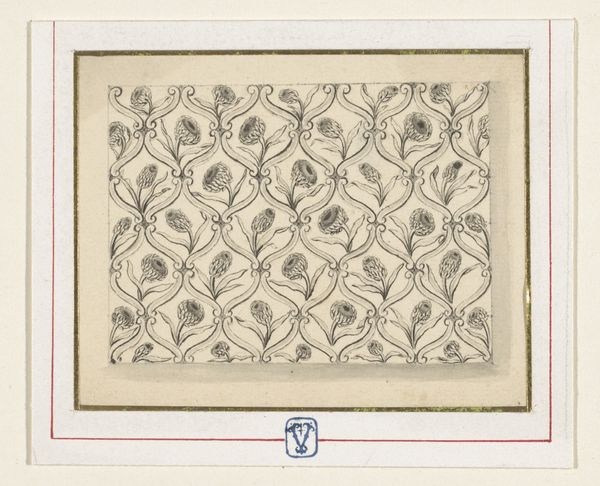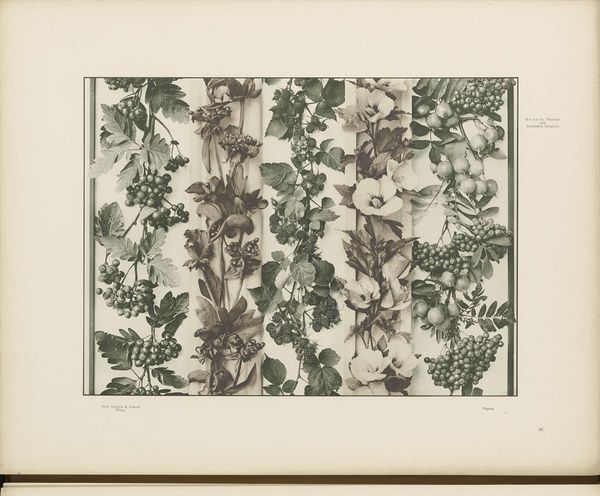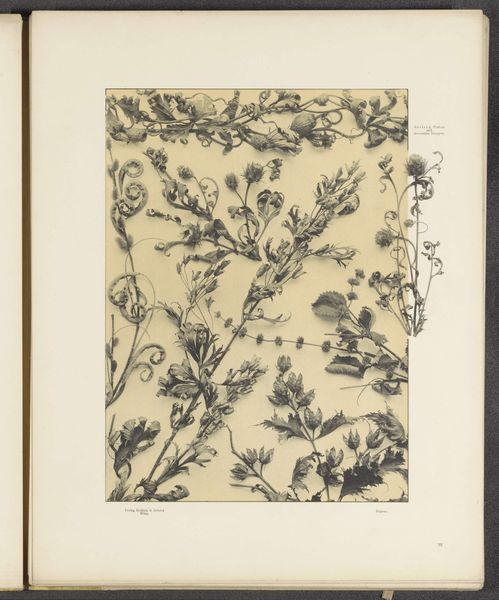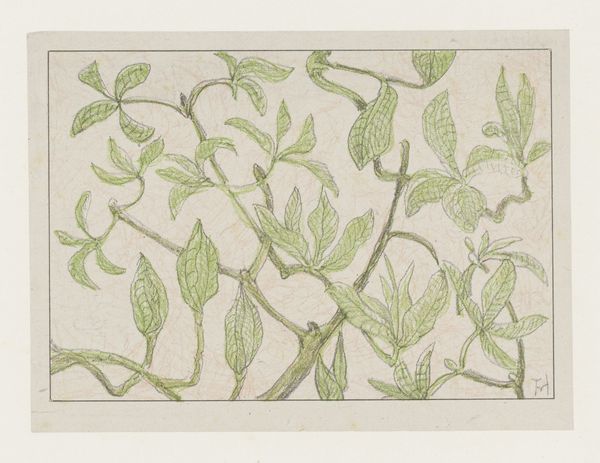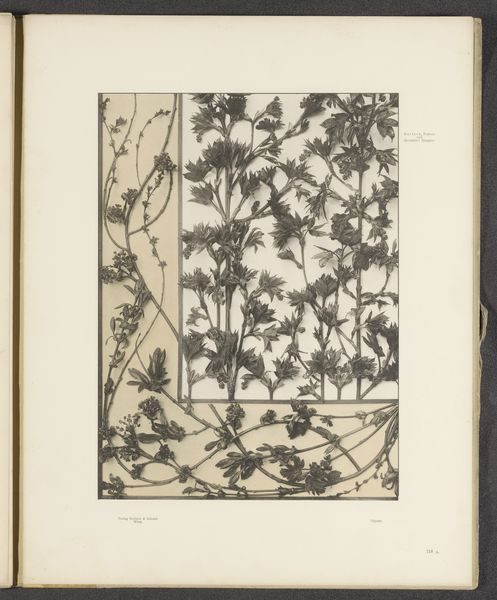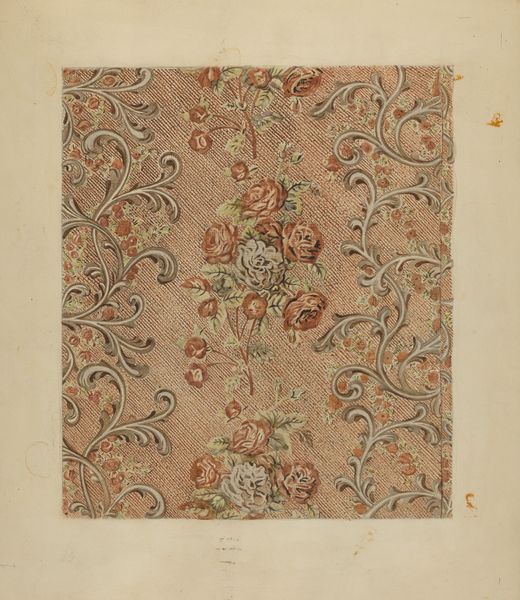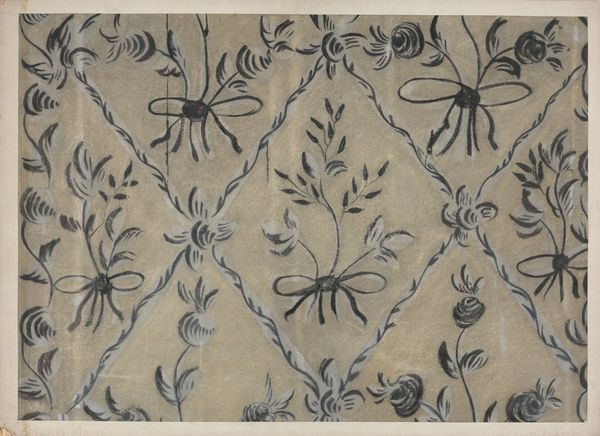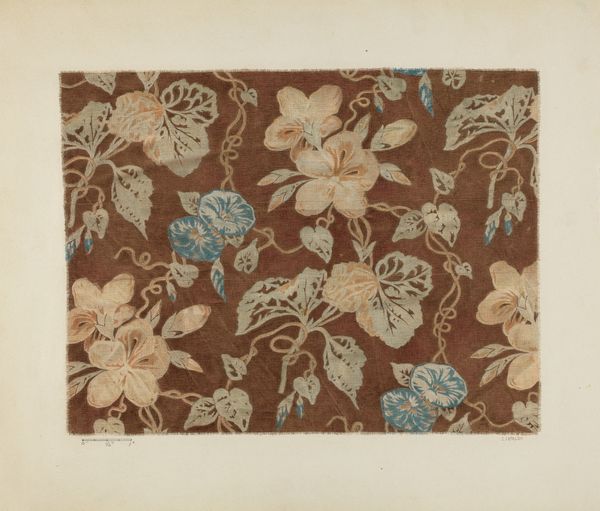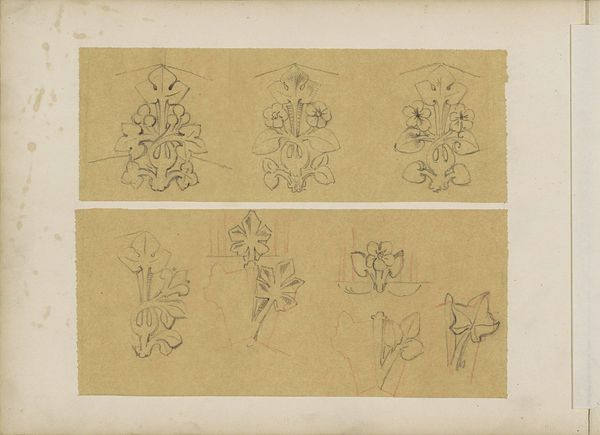
drawing, print, paper
#
drawing
#
baroque
# print
#
pattern
#
paper
#
geometric
#
line
Dimensions: height 75 mm, width 100 mm
Copyright: Rijks Museum: Open Domain
Curator: Welcome. Before us, we have a pattern design rendered between 1631 and 1686 by Jacques Vauquer, currently held at the Rijksmuseum. It's titled, "Patroon van ruitvormige vlakken met bloemen," or, "Pattern of Diamond-Shaped Surfaces with Flowers". Editor: The immediate impression is delicate, a subdued elegance. The overall tonality is light and the variations in shading offer a quiet visual rhythm. Curator: Indeed. And this period—the late Baroque—saw a significant shift in decorative arts. Consider the Dutch Republic at this time: a burgeoning merchant class, growing interest in luxury goods, and global trade shaping both tastes and social structures. Vauquer's pattern exemplifies this intersection of naturalistic forms and stylized design. Editor: From a formalist standpoint, the tension arises from the interplay between the strict geometry of the diamond grid and the organic floral motifs. The visual contrast directs our focus between the pattern and the figure, the interaction creates an engaging sense of depth and movement, and that interplay structures the entire work. Curator: Precisely. But also consider the socio-political dimension of floral representation at the time. Flowers were not merely decorative. They carried symbolic weight, reflecting prosperity, religious allegories, or even the fleeting nature of beauty and life itself—a commentary on the transient fortunes of the Dutch Golden Age. Editor: True, one could see it that way, and yet I’m compelled to come back to the craftsmanship evident in the subtle linework of each bloom and carefully rendered diamond. These delicate lines have an objective visual and structural impact independent of cultural symbolism, a semiotic field, where form engenders content. Curator: Agreed, there's a certain sophistication in its balance of ornamentation and restraint, so characteristic of the era's sensibility and simultaneously evocative of broader cultural narratives. Editor: Considering these formal qualities together allows us, I believe, a much fuller view. Curator: I concur. It also forces us to contend with the artwork and historical realities on their own terms.
Comments
No comments
Be the first to comment and join the conversation on the ultimate creative platform.
